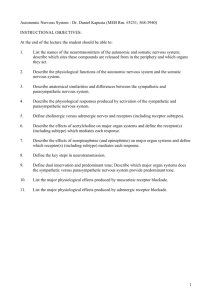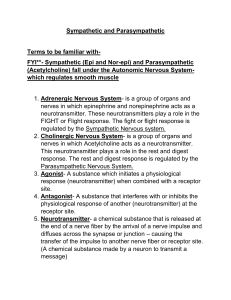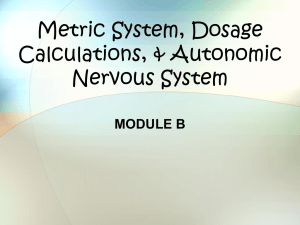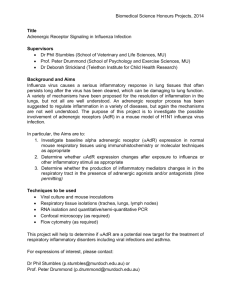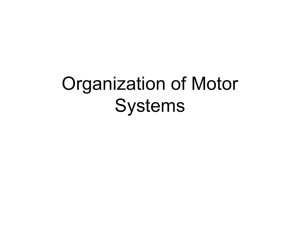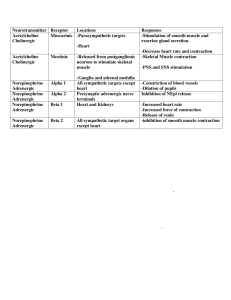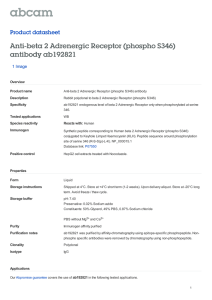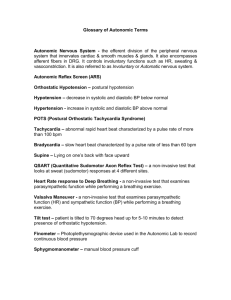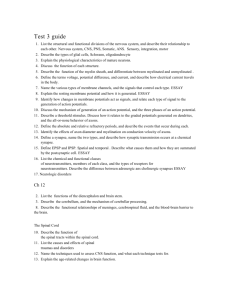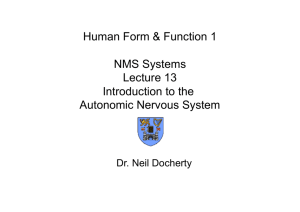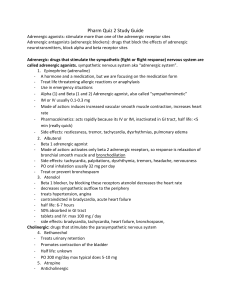Autonomic Nervous System
advertisement
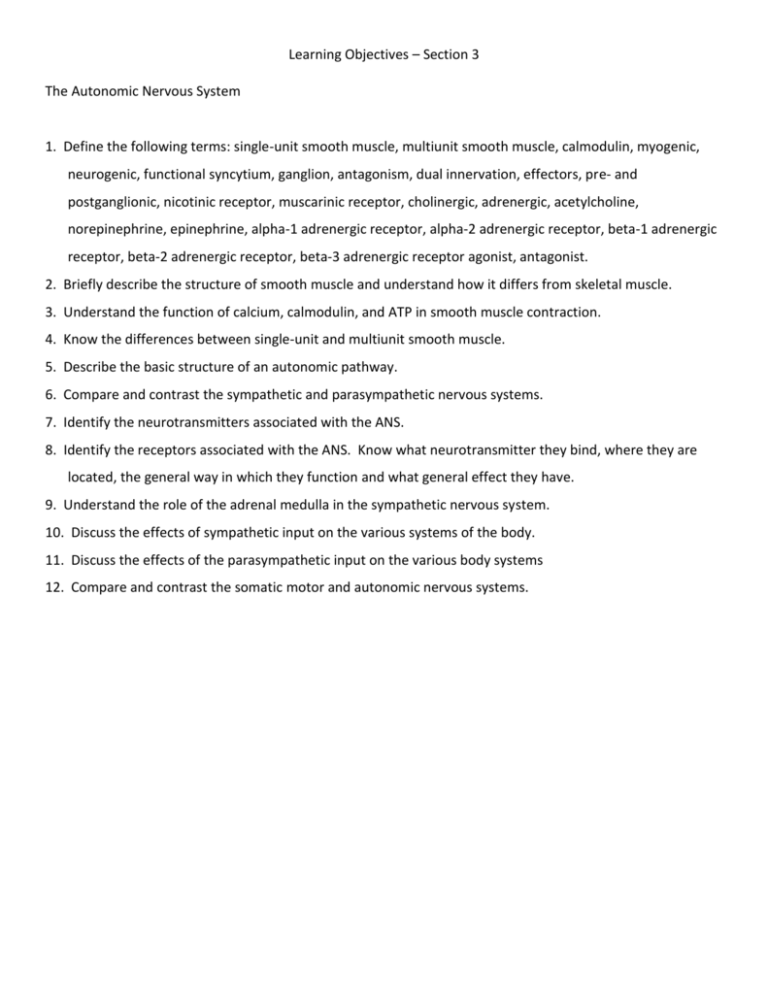
Learning Objectives – Section 3 The Autonomic Nervous System 1. Define the following terms: single-unit smooth muscle, multiunit smooth muscle, calmodulin, myogenic, neurogenic, functional syncytium, ganglion, antagonism, dual innervation, effectors, pre- and postganglionic, nicotinic receptor, muscarinic receptor, cholinergic, adrenergic, acetylcholine, norepinephrine, epinephrine, alpha-1 adrenergic receptor, alpha-2 adrenergic receptor, beta-1 adrenergic receptor, beta-2 adrenergic receptor, beta-3 adrenergic receptor agonist, antagonist. 2. Briefly describe the structure of smooth muscle and understand how it differs from skeletal muscle. 3. Understand the function of calcium, calmodulin, and ATP in smooth muscle contraction. 4. Know the differences between single-unit and multiunit smooth muscle. 5. Describe the basic structure of an autonomic pathway. 6. Compare and contrast the sympathetic and parasympathetic nervous systems. 7. Identify the neurotransmitters associated with the ANS. 8. Identify the receptors associated with the ANS. Know what neurotransmitter they bind, where they are located, the general way in which they function and what general effect they have. 9. Understand the role of the adrenal medulla in the sympathetic nervous system. 10. Discuss the effects of sympathetic input on the various systems of the body. 11. Discuss the effects of the parasympathetic input on the various body systems 12. Compare and contrast the somatic motor and autonomic nervous systems.
